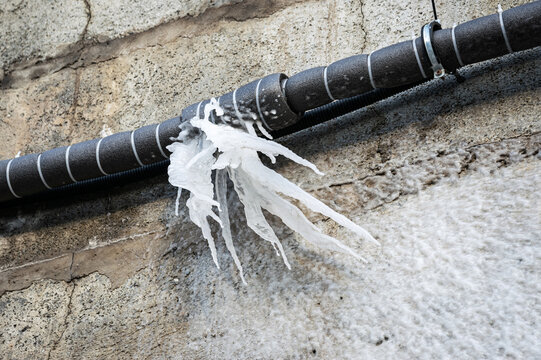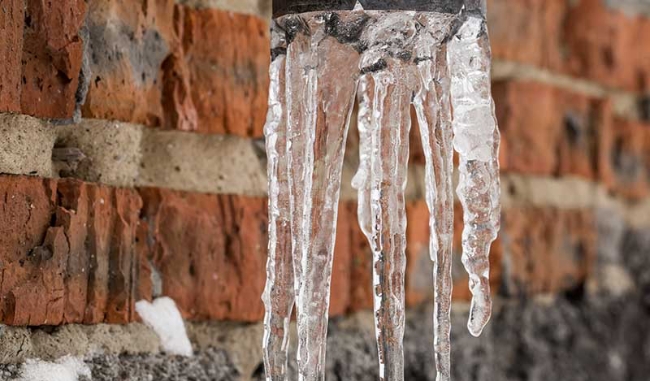Critical Approaches for Avoiding Frozen Pipes in Cold Weather
Critical Approaches for Avoiding Frozen Pipes in Cold Weather
Blog Article
What are your opinions on How to prepare your home plumbing for winter weather?

Winter can wreak havoc on your plumbing, specifically by freezing pipelines. Right here's how to stop it from occurring and what to do if it does.
Introduction
As temperature levels decline, the danger of frozen pipelines boosts, potentially leading to pricey repair work and water damage. Recognizing exactly how to stop icy pipes is vital for property owners in cold environments.
Understanding Icy Pipes
What causes pipes to ice up?
Pipelines freeze when exposed to temperature levels below 32 ° F (0 ° C) for extended periods. As water inside the pipelines ices up, it broadens, putting pressure on the pipe wall surfaces and possibly triggering them to burst.
Threats and problems
Frozen pipes can bring about water system interruptions, home damage, and costly fixings. Ruptured pipes can flooding homes and cause considerable structural damages.
Indications of Frozen Piping
Determining frozen pipes early can prevent them from breaking.
Just how to recognize icy pipes
Search for decreased water flow from faucets, uncommon smells or noises from pipelines, and noticeable frost on subjected pipes.
Prevention Tips
Protecting prone pipes
Cover pipelines in insulation sleeves or utilize warm tape to shield them from freezing temperatures. Focus on pipes in unheated or exterior areas of the home.
Home heating strategies
Maintain indoor rooms properly heated up, particularly areas with plumbing. Open closet doors to permit cozy air to flow around pipelines under sinks.
Securing Exterior Plumbing
Garden tubes and outdoor taps
Separate and drain garden hoses prior to wintertime. Set up frost-proof spigots or cover exterior faucets with insulated caps.
What to Do If Your Pipelines Freeze
Immediate actions to take
If you suspect icy pipes, maintain faucets open up to eliminate pressure as the ice thaws. Use a hairdryer or towels taken in hot water to thaw pipes gradually.
Long-Term Solutions
Structural changes
Consider rerouting pipelines far from exterior wall surfaces or unheated locations. Add extra insulation to attics, cellars, and crawl spaces.
Updating insulation
Buy high-grade insulation for pipelines, attic rooms, and walls. Proper insulation helps keep regular temperature levels and decreases the risk of icy pipes.
Conclusion
Preventing icy pipes requires proactive steps and quick reactions. By understanding the causes, indications, and preventive measures, homeowners can safeguard their plumbing during winter.
6 Proven Ways to Prevent Frozen Pipes and Protect Your Home
Disconnect and Drain Garden Hoses
Before winter arrives, start by disconnecting your garden hoses and draining any remaining water. Close the shut-off valves that supply outdoor hose bibs and leave the outdoor faucet open to allow any residual water to drain. For extra protection, consider using faucet covers throughout the colder months. It’s also important to drain water from any sprinkler supply lines following the manufacturer’s directions.
Insulate Exposed Pipes
Insulating your pipes is an effective way to prevent freezing. Pipe insulation is readily available at home improvement stores and is relatively inexpensive. Pay close attention to pipes in unheated areas such as the attic, basement, crawl spaces, or garage. Apply foam insulation generously to create a buffer against the cold. You can also wrap your pipes in heat tape or thermostat-controlled heat cables for added warmth.
Seal Air Leaks
Inspect your home for any cracks or openings that could let in cold air. Seal any holes around the piping in interior or exterior walls, as well as the sill plates where your home rests on its foundation. Additionally, make sure to keep your garage door closed unless you’re entering or exiting. Leaving it open creates a significant air leak that can lead to frozen pipes.
Allow Warm Air Circulation
During cold snaps, it’s essential to allow warm air to circulate evenly throughout your home. Leave interior doors ajar to promote better airflow. Open kitchen and bathroom cabinets to help distribute heat consistently around the rooms. If you have small children or pets, be sure to remove any household chemicals or potentially harmful cleaners from open cabinets for safety.
Let Faucets Drip
A small trickle of water can make a big difference in preventing ice formation inside your pipes. When temperatures drop significantly, start a drip of water from all faucets served by exposed pipes. This continuous flow helps prevent the water from freezing. Additionally, running a few faucets slightly can relieve pressure inside the pipes, reducing the chances of a rupture if the water inside does freeze.
https://choateshvac.com/6-proven-ways-to-prevent-frozen-pipes-and-protect-your-home/

We were shown that write-up about Prevent Frozen Pipes from a buddy on another domain. Sharing is good. You never know, you may just be helping someone out. Thank you so much for going through it.
Free Estimate Report this page